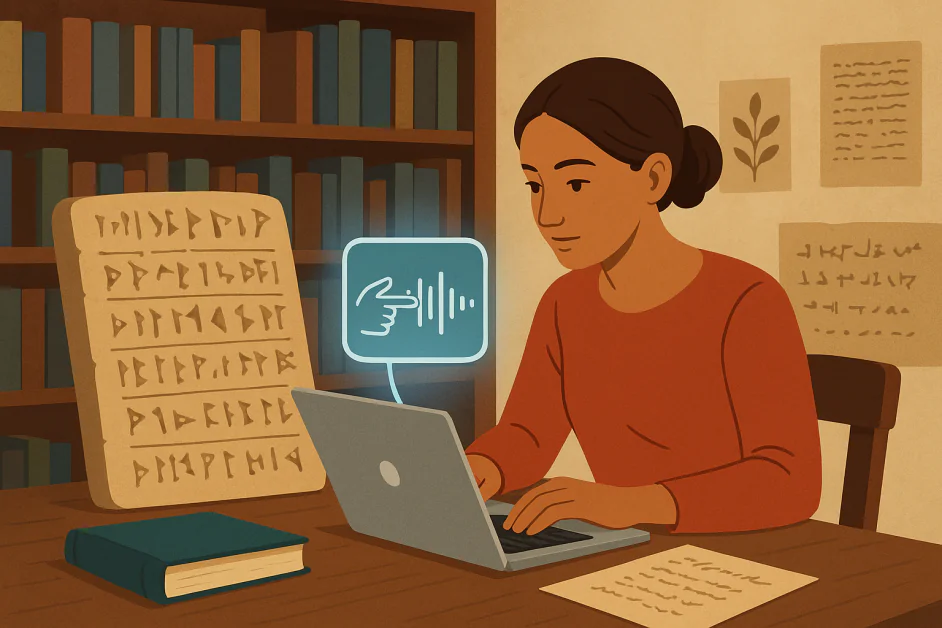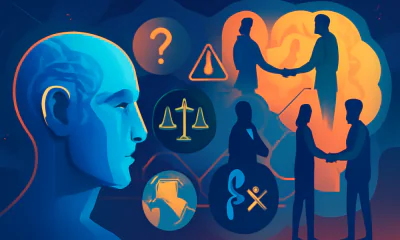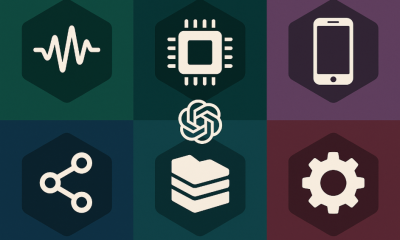人工智能
人工智能的语言幽灵:机器能否复活已死的语言还是将其永远埋葬?

Many languages that once defined cultures now exist only in written records, fragments, or in the memories of a few speakers. Some were lost through conquest, colonization, and cultural suppression. Others disappeared when younger generations stopped speaking them. Each loss removed not only the language but also the knowledge and cultural identity it carried.
今天, DigiOps与人工智能 is being used to study manuscripts, audio archives, and inscriptions to reconstruct lost grammar, vocabulary, and pronunciation. Supporters view this as a possible path to revival, giving communities a way to reconnect with their linguistic heritage.
However, there are risks. Reconstructions without cultural context, historical depth, and active community use may produce languages that seem accurate but are not truly functional or meaningful. In such cases, preservation remains limited to static records, confirming their disappearance rather than reversing it.
Language Loss in the Age of Globalization
The decline of linguistic diversity is now occurring at a faster rate than at any other point in history. UNESCO estimates that almost 40% of the world’s 7,000 languages are endangered, with one disappearing roughly every two weeks. This is not only a loss of communication systems but also unique perspectives, histories, and specialized knowledge.
Conventional documentation efforts, such as recording speech, mapping grammar, and archiving oral stories, are essential but often slow. Many languages fade before they can be fully recorded.
AI is beginning to change this pace. Advanced tools can process rare audio, identify patterns, and reconstruct incomplete linguistic systems far more quickly than traditional methods. While this offers new opportunities for preservation, it also has challenges. If preservation focuses only on data without community engagement or cultural grounding, the result may be an archive that is precise but disconnected from living use.
Sustaining linguistic heritage in the modern world requires cooperation between researchers, technologists, and the communities themselves to ensure that preservation is both accurate and culturally meaningful.
AI in Linguistic Reconstruction and Language Revival
In recent years, AI has evolved from a research tool into a core driver of linguistic reconstruction. 机器识别 models, particularly deep neural networks, now handle tasks that once required decades of meticulous scholarly effort. These systems can analyze vast repositories of manuscripts, inscriptions, and audio records in a fraction of the time once needed, uncovering patterns that may have been invisible to human researchers.
Technological reconstruction of lost languages often combines two complementary methods. The first uses pattern recognition models to detect recurring structures in grammar, syntax, and vocabulary from surviving records. The second applies generative systems, such as 大型语言模型 (LLM), to fill in the gaps. Insights from the first stage guide the second, allowing neural models to suggest missing words, phrases, or even phonetic patterns. By training on related languages and partial documentation, these systems can generate plausible versions of how the language might have sounded and how its sentences were likely formed.
Several real-world projects show how these methods work in practice. AI-assisted research has modelled 原印欧语 roots with greater statistical accuracy, reconstructed ancient Greek phonetics from incomplete manuscripts, and created realistic speech synthesis for endangered languages, letting communities hear pronunciations unheard for decades.
However, reconstruction faces both technical and cultural challenges. Limited or poor-quality data can cause models to generate patterns that never existed. Even when statistical accuracy is high, it does not always reflect cultural authenticity. This is why many projects pair algorithmic outputs with the expertise of linguists, anthropologists, and, most importantly, native speakers.
New techniques such as 自我监督学习 add further potential. These models can learn structural rules from single-language data without relying on parallel translations, making them suitable for languages with few resources. When used in collaborative settings, they offer both speed and scale while keeping cultural context intact.
AI-based reconstruction can only succeed if technology works together with people. The best outcomes happen when AI assists human experts and community leaders instead of replacing them. This way, silent records can become living, spoken languages again.
The Evolution of Digital Language Preservation from Static Archives to Interactive Revival
Before AI, efforts to preserve endangered and extinct languages depended mainly on static digital archives. Projects such as the Rosetta Project 和 Endangered Languages Archive collected dictionaries, manuscripts, audio recordings, and cultural artifacts. These collections provided scholars and communities with valuable access to linguistic heritage. However, these resources were largely passive. Learners could look up words or listen to recordings, but had limited opportunities to use or practice the languages actively. This restricted their revival as living forms.
AI, on the other hand, has transformed this situation by introducing interactivity and dynamic engagement. Modern AI tools include chatbots, voice assistants, and translation applications that can speak, listen, and respond in endangered or extinct languages. This advancement allows languages to move beyond reference materials. They can now be part of daily life, education, and cultural expression through interactive experiences.
A major strength of AI lies in translation and reconstruction. When complete dictionaries or texts are missing, AI models analyze related languages to fill gaps. For instance, if 30% of a language’s vocabulary is lost, AI can suggest likely words by using information from similar languages or historical records. AI also reconstructs the sounds of lost languages. By combining phonetic details from ancient texts with modern linguistic knowledge, AI-generated voices now speak languages like Sumerian, Sanskrit, and Old Norse. This enables learners and researchers to hear languages that have been silent for centuries.
Challenges and Ethical Considerations in AI-Driven Language Revival
AI has enabled new ways to revive endangered and extinct languages. Still, many challenges remain in this process. AI outputs are only the best approximations without native speakers to verify them. Sometimes, AI models produce pronunciations or usages that seem plausible but may not be historically or culturally accurate. This highlights the need for close collaboration among technologists, linguists, and members of the language community. Such partnerships must ensure that language revival respects both cultural heritage and historical truth.
One significant risk is that an AI-driven revival might create a language that exists only digitally. A language is more than vocabulary and grammar; it lives in daily use, social habits, humor, and cultural practices. If a language is reconstructed by AI but not spoken or used regularly by people, it becomes a static museum artifact. It is preserved technically but socially inactive.
Bias is another concern. Training data often comes from colonial-era archives or outsider sources. These may reflect perspectives that differ from the community's view. If AI learns from such biased data, it may reproduce a distorted version of the language. This risks misrepresenting the true heritage and identity of the community.
Over-reliance on AI tools can also be problematic. If communities rely solely on AI for language teaching and maintenance, they may lose motivation to pass the language down through person-to-person interaction. Oral transmission and community engagement are vital for a language's survival. AI should support these processes, not replace them.
Ethical issues around ownership and control are crucial. Many Indigenous and minority groups see language as a core part of their cultural heritage. They worry that large technology companies may claim rights over AI-generated language content, particularly if it is based on recordings made by their elders. To protect community rights, revival efforts must involve local people from the start. Projects should respect consent, data sovereignty, and cultural sensitivities. AI should act as a partner, assisting but never replacing human decision-making.
Promising examples of this approach exist. In New Zealand, AI tools help create language resources for the Māori language. All content is reviewed and approved by Māori linguists and educators. Similarly, in Canada, AI supports Indigenous languages such as Inuktitut and Cree. Communities use AI to develop their own digital learning tools. While AI speeds up resource creation, the core of the revival remains human teaching and cultural practice.
This combined approach uses AI’s processing power alongside the cultural knowledge and wisdom of native speakers. It helps keep languages alive both online and in everyday life. AI can accelerate revival, but it must work hand in hand with people, culture, and community use to truly restore these languages.
底线
The revival of dead and endangered languages is a complex task. AI offers powerful tools to speed up reconstruction and create interactive resources. However, technology alone cannot revive a language entirely. True revival depends on people, native speakers, communities, and cultural practices that keep the language alive every day.
AI must work as a supportive partner, not a replacement, ensuring that revived languages carry real meaning and cultural value. Collaboration between technologists, linguists, and communities is essential to balance accuracy, authenticity, and respect for heritage. Only then can we move beyond preserving words in archives to restoring living, spoken languages that connect us to our past and enrich our future.












